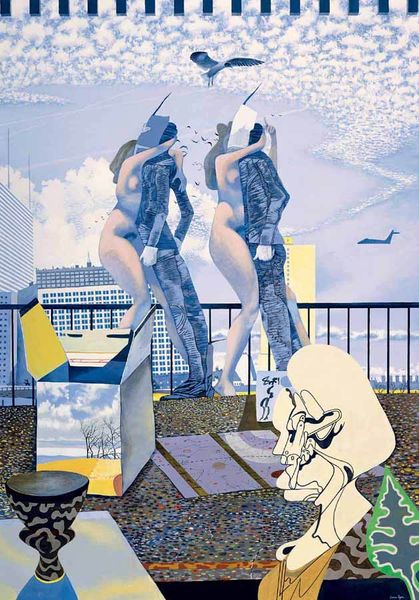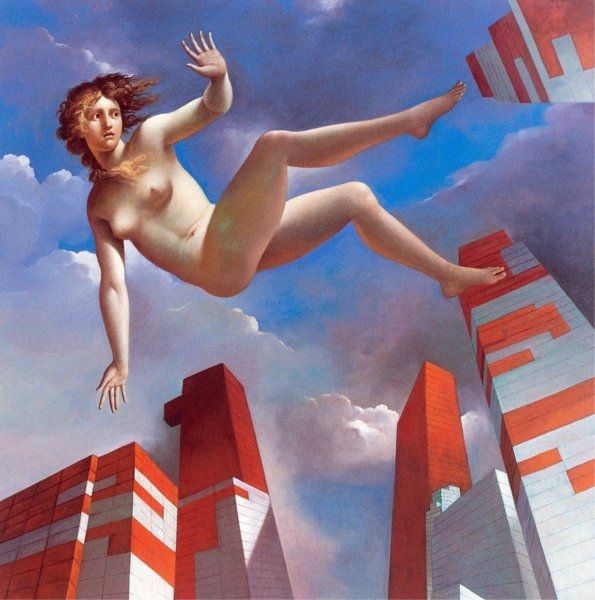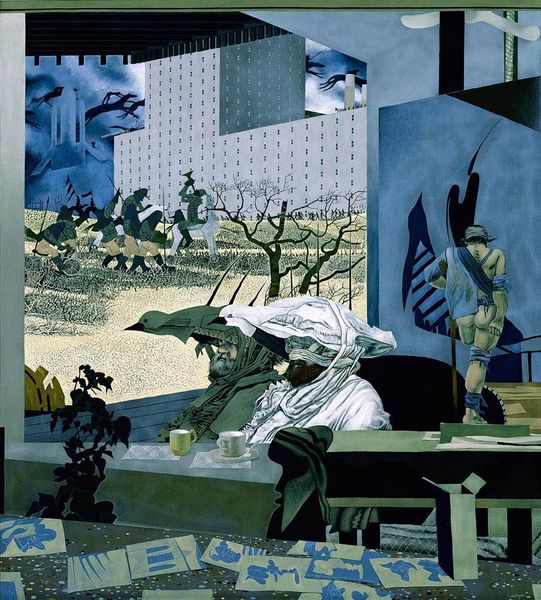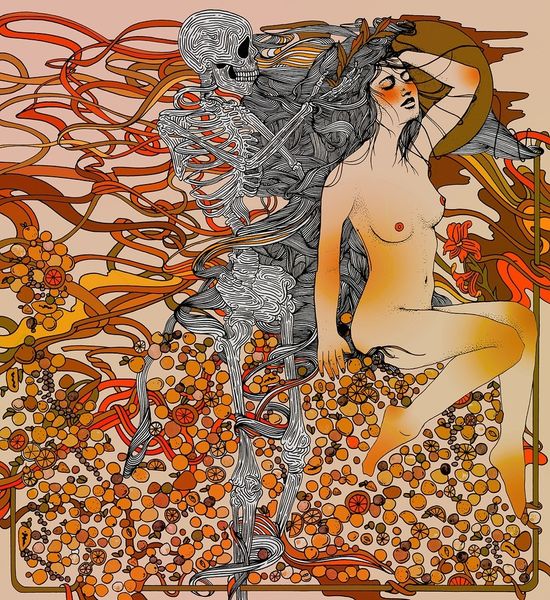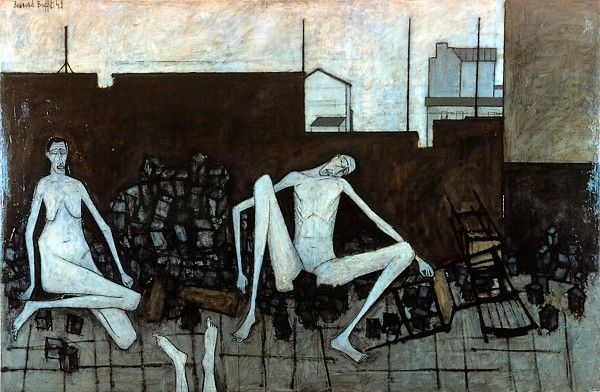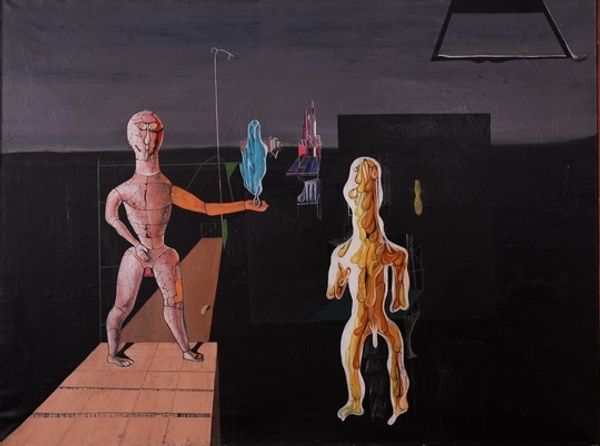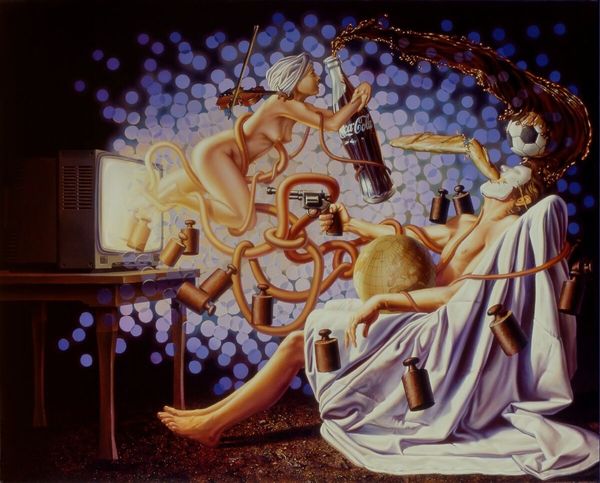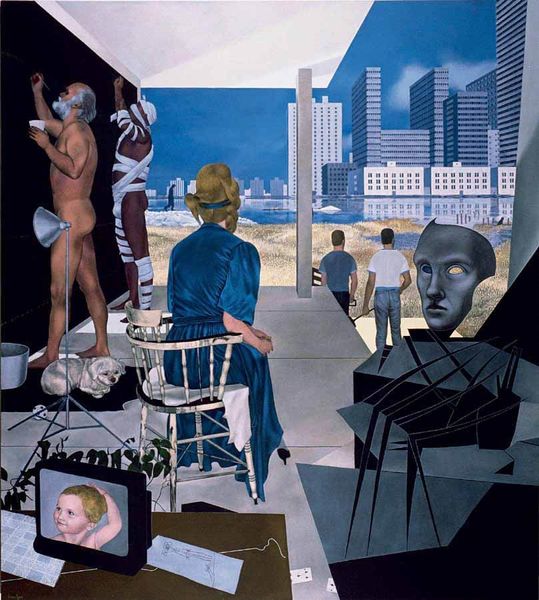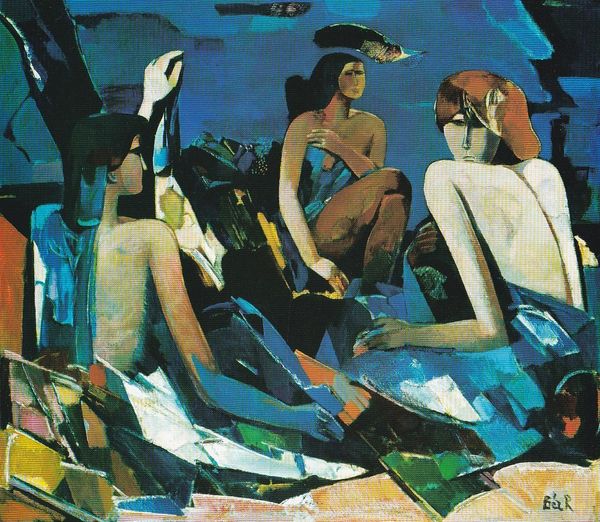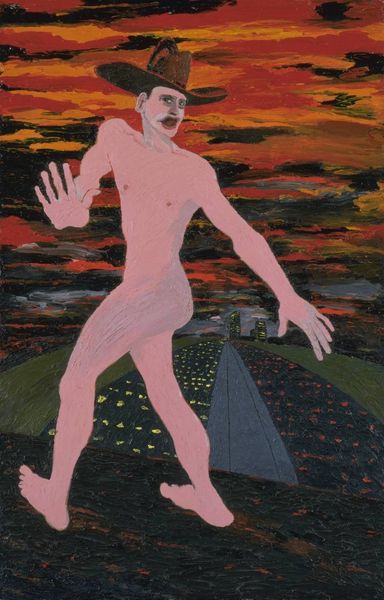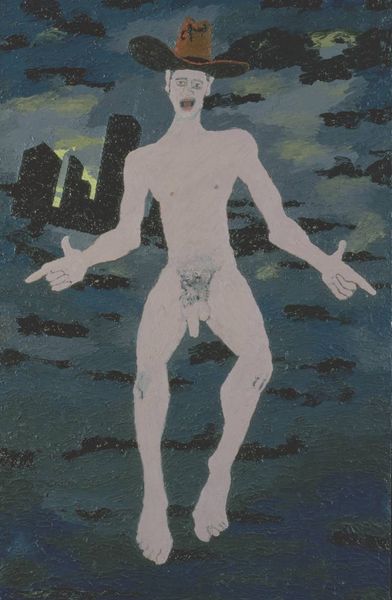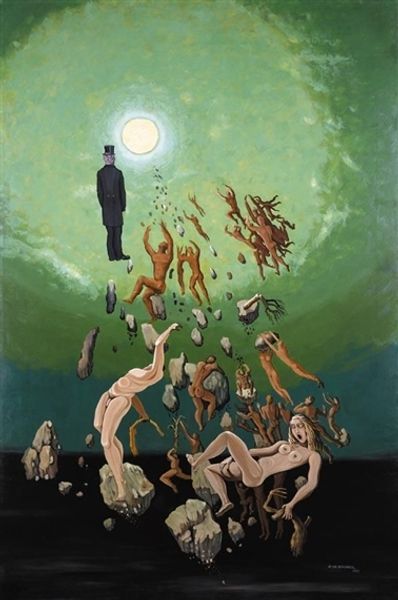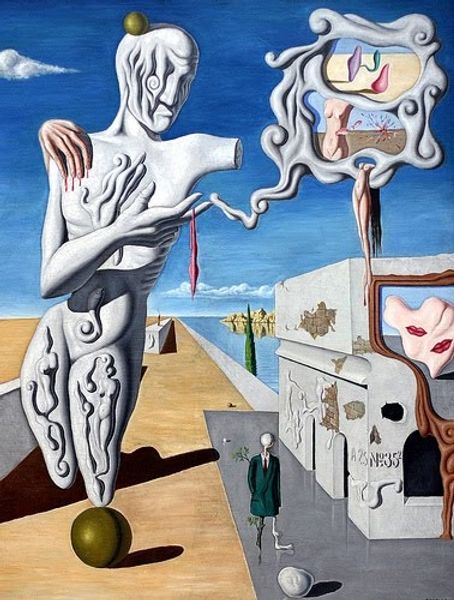
painting, acrylic-paint
#
painting
#
landscape
#
acrylic-paint
#
figuration
#
cityscape
#
surrealism
#
modernism
Dimensions: 203 x 142 cm
Copyright: Ivan Eyre,Fair Use
Curator: This striking acrylic painting on canvas is entitled "Outskirts," and it comes to us from Ivan Eyre in 1986. What's your first take? Editor: A definite unease. The cool blue palette and discordant figures project a dreamlike yet unsettling mood. Is this a celebration of modernity gone awry? Curator: The composition immediately grabs my attention. The juxtaposition of organic forms, the figures, against the rigid geometry of the architecture, establishes a visual tension. Eyre uses the modernist grid as a kind of background noise, disrupting the illusion of pictorial space. Editor: The figure in the foreground is compelling. With those joined faces, it reminds me of Janus, the Roman god of beginnings and transitions. Perhaps Eyre is using this bi-faced figure to suggest a cultural shift or a world at a turning point. There is something ritualistic in the gesture of the upraised hands, don't you think? Curator: I do. Note how the pose of the forward figure—with that slight arabesque of the leg—echoes the leaping figure toward the upper left. Here is a study of rhythm in dynamism. Also, how are we to understand the orientation? Is it an apocalyptic landscape or an uncanny stage? Eyre seems deliberately ambiguous. Editor: The colour choices are striking, aren't they? The limited range heightens the symbolic feeling of alienation, especially those ghostly flesh tones set against the monochromatic urban architecture. Also, there's the matter of those scattered "photos" around the foreground--a nude woman is visible in at least one. What are these traces of human presence and interaction meant to convey in this dreamlike setting? Curator: Perhaps those are documents pointing toward some type of psychological trauma? Or are those relics evidence of cultural ruin? Eyre often deploys perspectival flattening to underscore that what's being viewed has no anchor, which gives the image a kind of restless quality. Editor: It does speak to me about a sense of precariousness that sits with modern culture and, I believe, still resonates powerfully today. The symbols within this piece demand decipherment and encourage continual reflection. Curator: Agreed. "Outskirts," through its sophisticated composition and unsettling symbolism, offers an astute commentary on the state of modernity itself. The formal techniques provide for a powerful experience.
Comments
No comments
Be the first to comment and join the conversation on the ultimate creative platform.
